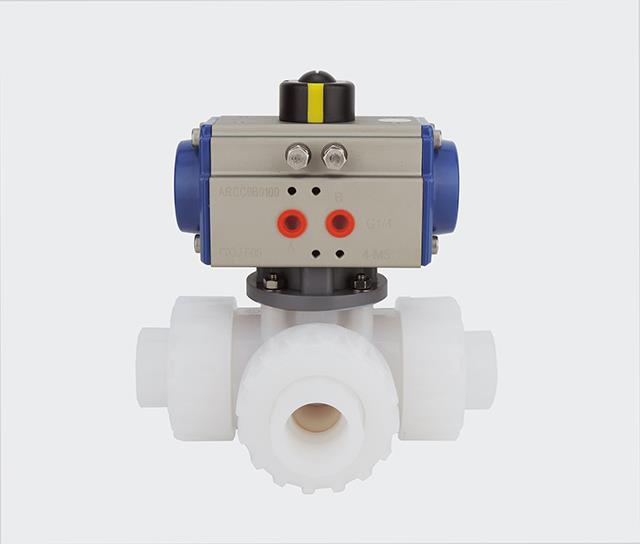PVDF ball valve are an advanced solution for managing chemical flows, offering unmatched durability and chemical resistance. These high-performance plastic valves, made from polyvinylidene fluoride, excel in handling acids, bases, solvents, and other aggressive substances. It is making them ideal for industries like chemical manufacturing, wastewater treatment, and pharmaceuticals.
Compared to other plastic valves such as PVC ball valves, CPVC ball valves, or specialized options like the three-way ball valve PVC, PVDF stands out for its superior performance in demanding environments. While PVC ball valves are widely used for general applications, and CPVC ball valves handle higher temperatures, PVDF manual ball valve provide the perfect balance of safety, reliability, and long-term cost-efficiency, especially in high-purity or corrosive systems.
This post details the benefits of PVDF manual ball valves, from low-maintenance operation to their non-reactive nature, while also highlighting key considerations for selecting the right valve for your application. Whether you’re evaluating a plastic valve, plastic ball valve, or looking for advanced configurations like a three-way ball valve PVC, PVDF manual ball valves emerge as the optimal choice for critical chemical processes.
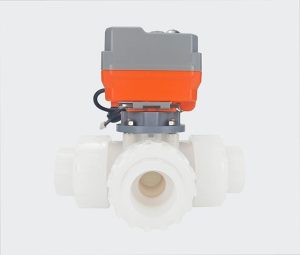
Introduction
PVDF (polyvinylidene fluoride) manual ball valves are highly efficient components designed for regulating chemical flows in demanding industrial environments. Composed of a high-performance thermoplastic, these valves are engineered to endure extreme chemical exposure, offering exceptional resistance to acids, bases, solvents, and other aggressive substances. PVDF’s inherent properties, such as its excellent durability, lightweight structure, and non-reactive nature, make it an optimal choice for applications requiring high purity or low-contaminant systems.
These valves stand out due to their ability to function reliably under harsh conditions where traditional materials, such as metals or other plastics like PVC and CPVC, could corrode or degrade over time. Their superior chemical compatibility and longevity help reduce maintenance demands and associated downtime, making them a cost-effective solution. PVDF manual ball valves are commonly employed across multiple industries. Including chemical processing, pharmaceuticals, and wastewater treatment, where a combination of operational safety and precision control is critical.
?Section 1: What Are PVDF Manual Ball Valves?
Polyvinylidene fluoride (PVDF) is a semi-crystalline high-performance thermoplastic polymer known for its exceptional chemical resistance, mechanical strength, and thermal stability. Its chemical structure, comprising strong carbon-fluorine bonds, contributes to its non-reactive nature. Making it highly resistant to acids, bases, solvents, and other aggressive chemicals. PVDF retains its mechanical integrity across a wide temperature range, performing reliably in both high and low thermal conditions.
While its UV and radiation resistance further enhance its durability in harsh environments. With a low propensity for leaching or contamination, PVDF is especially suited for industries requiring high purity. Such as pharmaceuticals, semiconductors, and chemical processing. Its lightweight nature, combined with superior corrosion resistance, makes it a preferred material over metals and other plastics like PVC and CPVC in applications where long-term reliability and chemical compatibility are essential. These attributes position PVDF as a critical resource in demanding industrial and environmental systems.
PVDF valves are renowned for their exceptional chemical resistance, durability, and lightweight design. Making them an ideal choice for managing aggressive chemicals in harsh environments. Their non-reactive surface and ability to withstand acids, bases, and solvents ensure long-term reliability, even under demanding conditions. The material’s inherent durability resists corrosion, wear, and UV exposure, reducing maintenance requirements and extending operational life. Additionally, their lightweight construction makes installation and handling more efficient compared to metal alternatives, without compromising strength. These advantages over other materials, such as PVC and CPVC, position PVDF valves as a preferred solution in industries. Like chemical processing, pharmaceuticals, and water treatment, where safety, performance, and stability are crucial.
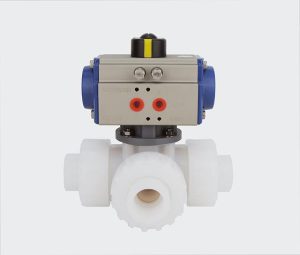
Section 2: Benefits of PVDF Manual Ball Valves for Chemicals
PVDF manual ball valves provide resistance to acids, bases, and solvents.
PVDF? ball valve excel in resisting acids, bases, and solvents due to the unique chemical properties of polyvinylidene fluoride. The carbon-fluorine bonds in PVDF are among the strongest in organic chemistry. Providing the material with remarkable chemical inertness and stability even when exposed to highly corrosive substances. This exceptional resistance ensures reliable performance in environments where other materials may degrade, corrode, or fail.
PVDF valves are especially advantageous in industries such as chemical processing, pharmaceuticals, and wastewater treatment. Where handling aggressive chemicals is routine. Compared to traditional materials like metals or lower-grade plastics, PVDF valves offer superior corrosion resistance and longevity. Reducing operational risks, maintenance demands, and potential system failures. This combination of robustness and chemical compatibility makes them a preferred choice for applications involving harsh and reactive environments.
Longevity and low-maintenance operation
PVDF valves are designed for exceptional longevity and low-maintenance operation. Making them an invaluable asset in industrial applications. Their outstanding chemical resistance, derived from robust carbon-fluorine bonds, prevents degradation caused by acids, bases, and solvents even in extreme or corrosive environments. This durability significantly reduces the need for frequent replacements or repairs, cutting maintenance costs and minimizing system downtime.
Additionally, PVDF’s resilience against wear, corrosion, and UV exposure extends the service life of these valves, outperforming traditional materials like metals or lower-grade plastics. Industries such as chemical processing, pharmaceuticals, and water treatment benefit from the reliability and operational efficiency of PVDF valves. Achieving long-term cost savings while ensuring stable and safe performance in some of the most demanding conditions.
Environmentally safe and non-reactive construction compared to metal valves.
PVDF valves offer an environmentally safe and non-reactive construction that sets them apart from metal valves in various critical applications. The chemical inertness of PVDF, combined with its non-toxic nature, ensures that it does not leach harmful substances. Making it a superior choice for sensitive settings such as pharmaceuticals and water treatment. Unlike metal valves.
Which are prone to corrosion and may release particulates or contaminants into the system, PVDF valves maintain purity and stability, eliminating such risks. Additionally, the production of PVDF valves typically consumes less energy compared to metal counterparts, reducing their environmental footprint. This lightweight yet durable material also contributes to lower transportation emissions and easier handling. These attributes not only enhance operational safety, but also make PVDF a more sustainable and reliable alternative to traditional metal valves in environmentally sensitive and high-performance applications.
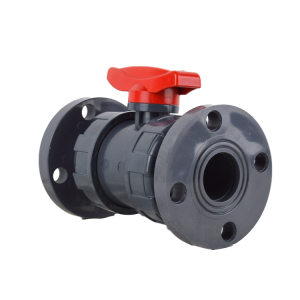
Section 3: Applications of PVDF Manual Ball Valves
Use cases in handling aggressive chemical flows.
PVDF valves are highly effective in handling aggressive chemical flows, making them indispensable in industries such as chemical processing, pharmaceuticals, and wastewater treatment. Their exceptional chemical resistance, particularly to acids, bases, and solvents, ensures they remain stable and inert even in the most corrosive environments. This resilience helps maintain system integrity and prevent leaks or contamination, critical in processes that demand high purity and safety standards.
PVDF valves excel in applications involving the transfer of hazardous chemicals, such as chlorine compounds or strong acids, where other materials like metal or standard-grade plastics may fail due to corrosion or degradation. Their ability to withstand extreme conditions not only enhances operational reliability but also reduces the risk of system breakdowns, offering unparalleled safety and performance in demanding industrial settings.
Performance in environments requiring high purity and low contaminant risks (e.g., food processing or ultrapure water systems).
PVDF valves deliver outstanding performance in environments requiring high purity and minimal contaminant risks, such as food processing and ultrapure water systems. Their non-reactive and non-leaching properties ensure that no harmful substances are introduced into the process, maintaining purity and upholding stringent safety standards. This chemical inertness makes PVDF a superior choice compared to metal or inferior plastic alternatives, which may corrode, degrade, or release particulates over time. Additionally, the smooth internal surfaces of PVDF valves reduce the likelihood of biofilm buildup or chemical residue, further safeguarding the integrity of sensitive applications. These qualities make PVDF valves a reliable solution in critical systems where maintaining purity is essential for both product quality and regulatory compliance.
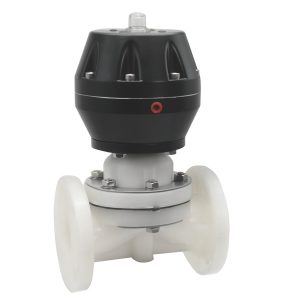
Example industries relying on PVDF valves for operational efficiency and safety.
Industries such as chemical processing, pharmaceuticals, water treatment, and food and beverage heavily rely on PVDF valves to achieve operational efficiency and ensure safety. The exceptional chemical resistance of PVDF makes these valves indispensable in handling corrosive and reactive substances commonly found in chemical plants. Similarly, their non-reactive and non-leaching properties are ideal for pharmaceutical applications, where product purity and compliance with stringent safety regulations are paramount.
In water treatment systems, PVDF valves withstand exposure to harsh chemicals like chlorine while maintaining system integrity and performance over time. The food and beverage industry benefits from their non-toxic construction and smooth surfaces, which prevent contamination and biofilm buildup. Compared to traditional metal or standard plastic valves, PVDF options provide superior reliability, longer service life, and cost savings by reducing downtime and maintenance requirements in these critical applications.
Section 4: Comparing PVDF Manual Ball Valves with Other Plastic Valves
Key differences between PVDF, PVC, CPVC, and other plastic valve materials.
PVDF, PVC, CPVC, and other plastic valve materials each offer distinct properties that make them suited for specific applications. PVDF stands out for its exceptional chemical resistance, high mechanical strength, and temperature tolerance, making it the preferred choice for handling harsh chemicals and extreme conditions. PVC, on the other hand, is widely used due to its affordability and resistance to mildly corrosive substances, though its lower temperature tolerance limits its use in heat-intensive processes. CPVC improves upon PVC by offering higher temperature capabilities while maintaining similar cost-effectiveness, making it a strong option for hot water systems or chemical applications within a moderate temperature range.
Other plastics such as polypropylene may provide excellent chemical resistance but lack the durability and strength of PVDF in more demanding environments. When comparing these materials, PVDF offers superior lifespan and reliability at a higher cost, while PVC and CPVC provide budget-friendly solutions for less extreme conditions. Selecting the right material depends on balancing durability, cost, and the operational demands of the application.
Cost vs. performance analysis of PVDF valves relative to PVC and CPVC options.
PVDF valves, while carrying a higher upfront cost compared to PVC and CPVC options, offer unmatched performance in applications demanding superior chemical resistance, temperature tolerance, and durability. Their long lifespan and ability to withstand harsh conditions make them an excellent investment for industries handling aggressive chemicals or operating in extreme environments, where system failures can lead to significant downtime and expense. Conversely, PVC and CPVC valves are more cost-effective in less demanding applications. PVC’s affordability and adequate resistance to mildly corrosive substances make it ideal for general-purpose use, while CPVC provides a budget-friendly solution with improved heat tolerance for moderately challenging conditions. When conducting a cost versus performance analysis, the choice of material should align with the operational requirements to ensure both economic efficiency and long-term reliability, as selecting a lower-cost material for severe environments could lead to premature failure and higher lifecycle costs.
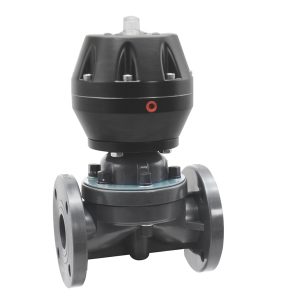
Section 5: Selecting the Right Valve for Your Application
Proper integration of PVDF manual ball valves into chemical systems requires adherence to specific installation and maintenance guidelines to ensure performance and longevity. During installation, precise alignment and compliance with torque specifications are critical to avoid stress on the valve body and ensure a tight seal. Compatibility checks with the system’s chemicals, operating temperatures, and pressures must be conducted to confirm PVDF’s suitability, given its exceptional resistance to a wide range of corrosive substances and its high durability in varied environments. Regular maintenance, including inspection for wear, cleaning of internal components, and timely replacement of seals or seats, is essential to prevent leaks and maintain system integrity. By focusing on these practices, PVDF valves can significantly enhance the safety and reliability of chemical systems, reducing the risks of system failure or contamination.
Choosing between one-way and multi-way valve configurations. Such as three-way ball valves made from PVC, depends heavily on the specific needs of the system and its operational complexity. One-way valves are ideal for straightforward flow control applications, where only single-direction flow regulation is required, making them cost-effective and easy to install. Conversely, multi-way valves excel in systems that demand versatile flow management, such as directing fluid between multiple outputs, interconnecting separate flow paths, or blending streams. For instance, a three-way ball valve can save space, reduce the number of fittings, and simplify piping layouts in systems requiring flexibility. However, the complexity of their design may increase upfront costs and necessitate more precise installation. When choosing the appropriate configuration, considerations such as system design complexity, spatial constraints. Required operational flexibility, and budget must guide the decision to ensure both performance and cost-efficiency.
FAQs
What industries typically use PVDF Manual Ball Valves?
PVDF Manual Ball Valves are widely used across industries that handle aggressive chemicals, such as:
Chemical processing plants
Water treatment facilities
Pharma and biotech industries
Mining and metallurgy
Food and beverage production (where high chemical resistance is required)
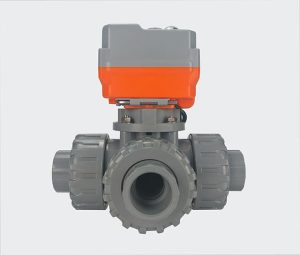
What are the primary maintenance requirements for PVDF Ball Valves?
To maintain optimal performance, routine checks should include:
Inspecting for wear or damage on the ball, seat, and seals.
Ensuring the valve handle operates smoothly.
Checking for leaks around connection points.
If any components show significant wear or degradation, replace them according to the manufacturer’s recommendations.
What certifications do PVDF Ball Valves comply with?
PVDF Ball Valves often meet industry-specific certifications such as ISO, FDA, NSF, or RoHS compliance, depending on the manufacturer. Check with your supplier for detailed certification documentation for traceability and quality verification.
Where can I purchase PVDF Manual Ball Valves?
You can source PVDF Manual Ball Valves directly through certified valve distributors or manufacturers with a strong reputation for quality control and global reach. Ensure your supplier meets industry standards and provides the necessary technical support for your application needs.For further technical assistance or to request a quote, feel free to contact us. We’re here to ensure your operations run smoothly and safely!

Conclusion
PVDF ball valves are an essential component in chemical applications where high-performance flow control is crucial. Renowned for their superior chemical resistance, exceptional durability, and ability to withstand harsh environments. PVDF ball valve provide unmatched reliability for demanding processes involving aggressive substances. Compared to general-purpose plastic valves, such as PVC ball valves and other plastic ball valve options. PVDF offers a significant advantage in scenarios requiring extreme temperature tolerance and long-term integrity. While PVC ball valves, including three-way ball valve PVC configurations, remain a cost-effective solution for less aggressive environments or moderate fluid control needs. PVDF excels when safety, longevity, and resistance are not negotiable. By carefully selecting the right valve material and type—whether a standard one-way valve, multi-way solution like a PVC three-way ball valve. Or a more robust PVDF option—systems can achieve optimal performance, enhance safety, and reduce the risk of failure in chemical operations.

